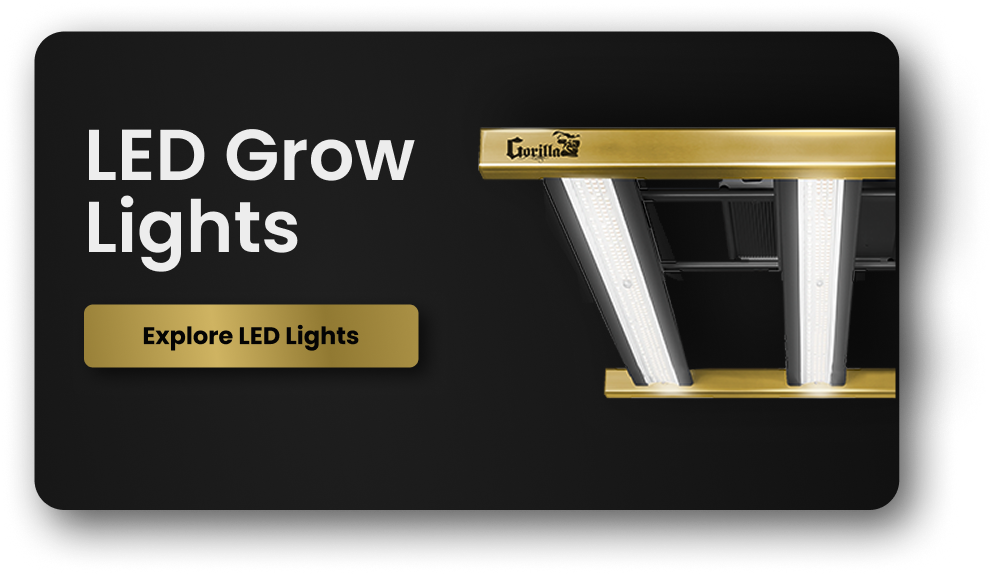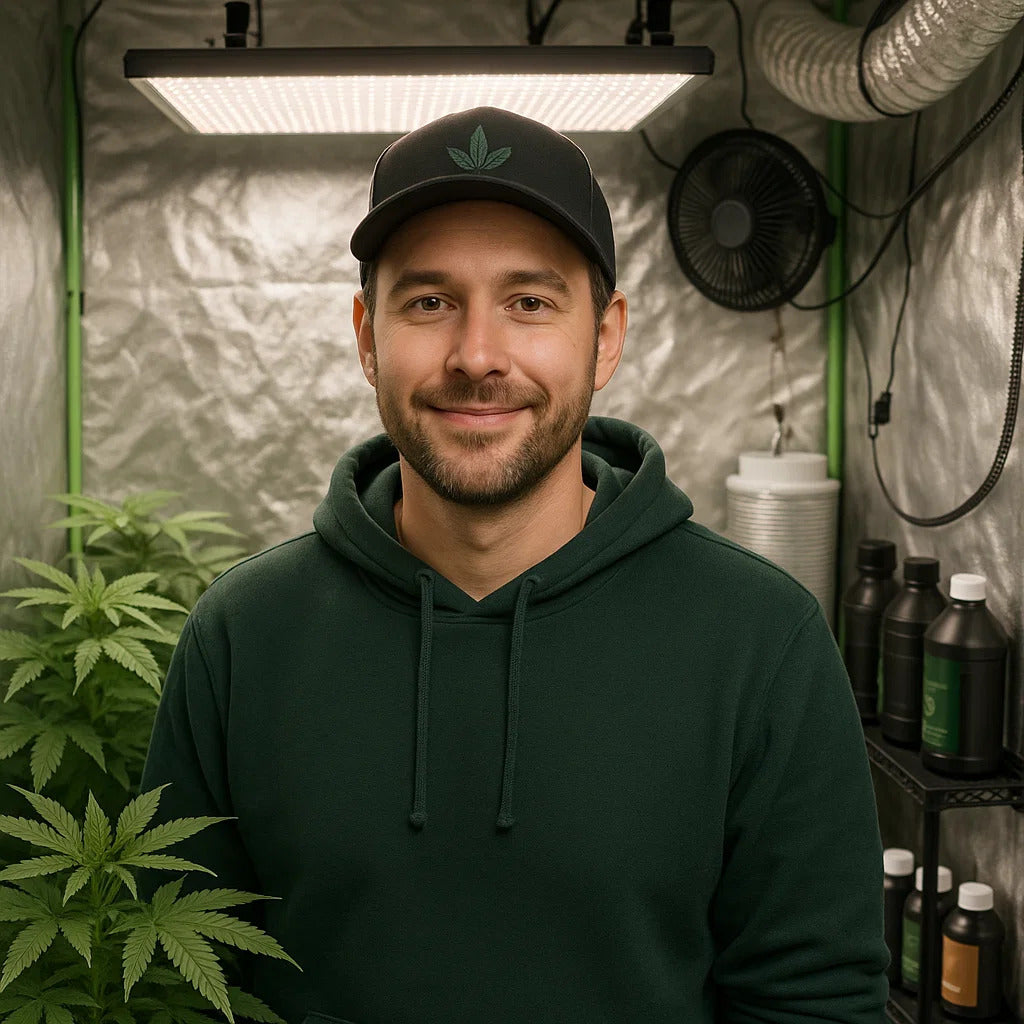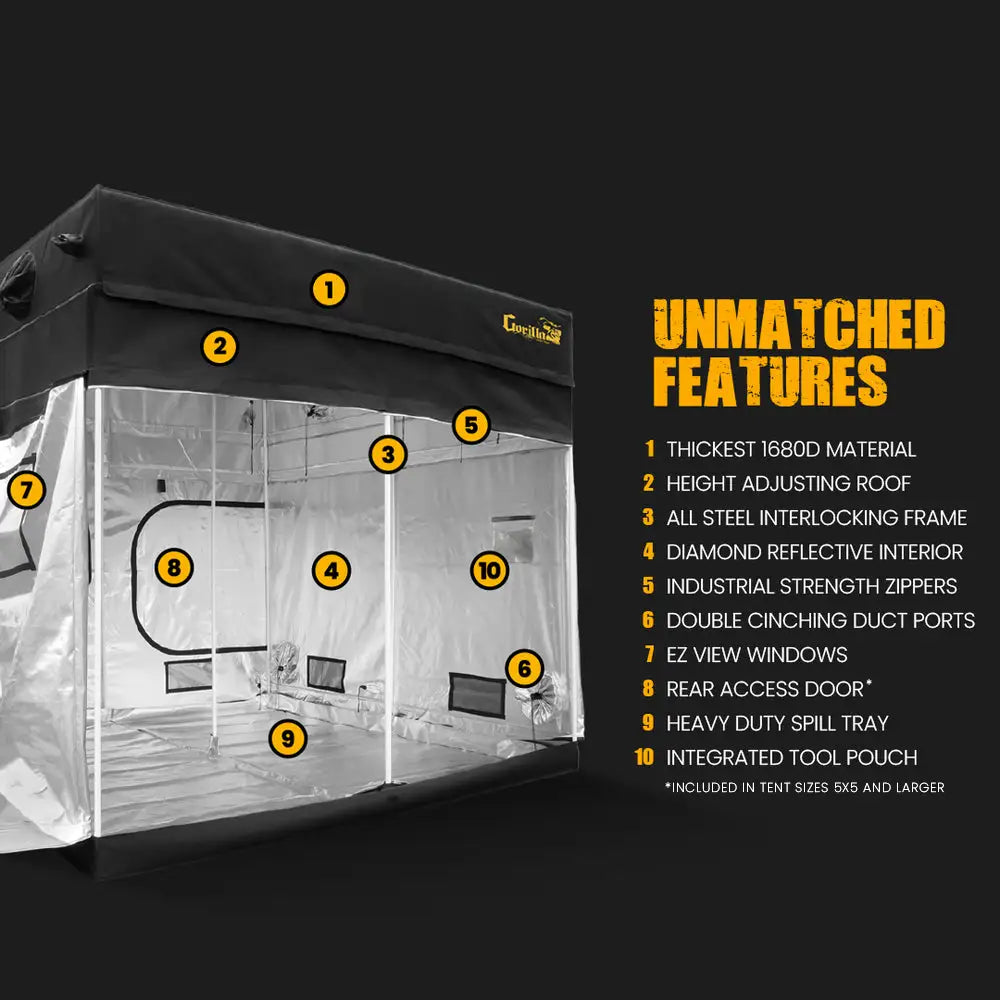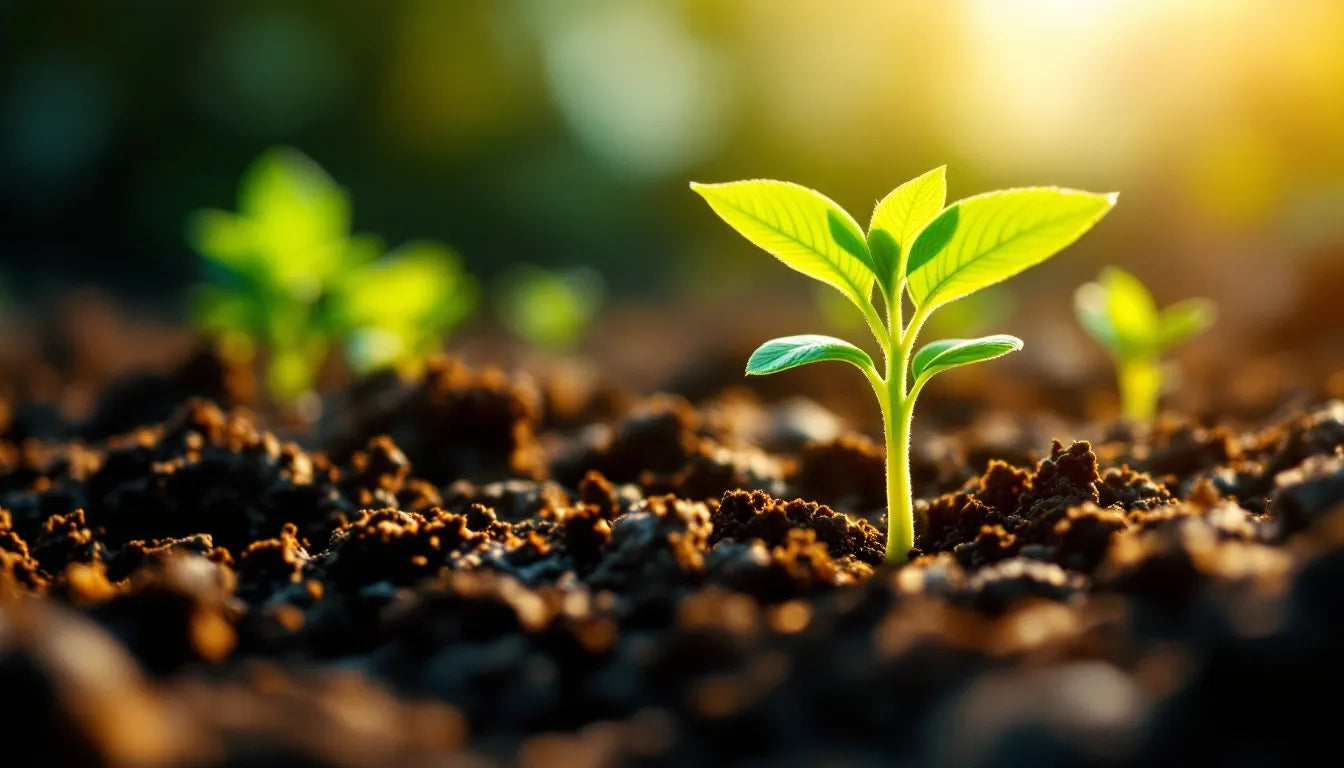
Best Budget LED Grow Lights for Beginners: Your Smart Start Guide
Starting your indoor growing journey doesn't require thousands of dollars in equipment. Smart beginners prioritize value over price tags, choosing budget LED grow lights that deliver professional results without unnecessary features driving up costs. The key is understanding which specifications actually impact plant growth versus which are just marketing fluff.
Budget-friendly doesn't mean cheap quality. The best entry-level LED systems provide the essential features beginners need—full-spectrum output, adequate PPFD, reliable components—while skipping advanced automation that newcomers won't utilize immediately. This guide reveals exactly what to look for in beginner-friendly LED lights and how to avoid the common mistakes that waste money and frustrate new growers.
What Makes an LED Grow Light "Budget-Friendly" for Beginners
True budget value combines three elements: affordable initial cost, low operating expenses, and features matched to beginner needs. A $150 light requiring $50 monthly in electricity and replacement bulbs every six months costs more long-term than a $400 quality LED using $15 monthly in power and lasting five years.
Calculate total cost of ownership over your first two years of growing. Include purchase price, electricity consumption, replacement costs, and potential yield differences. This reveals which "budget" options actually save money versus which just appear cheap initially.

Beginner-appropriate features matter more than advanced capabilities you won't use. New growers benefit from simple controls, reliable performance, and adequate coverage for 1-4 plants. Smartphone apps, complex spectrum programming, and commercial-grade features add cost without improving results for first-time growers learning fundamentals.
Start with small growing spaces that minimize equipment needs. A 2x2 grow tent setup requires one compact LED, while rushing into 4x4 or larger spaces demands multiple lights and higher electricity costs. Small spaces also make beginner mistakes less costly and environmental control more manageable. Learn more in our guide on maximizing yield in small spaces.
Essential Specifications Beginners Must Understand
Actual wattage determines electricity costs and heat output. Ignore "equivalent wattage" marketing claims like "1000W equivalent"—these numbers are meaningless. Check the actual power draw specification, typically 100-400 watts for beginner setups. Calculate monthly costs by multiplying actual watts by hours used daily and your local electricity rate.
PPFD (Photosynthetic Photon Flux Density) measures usable light reaching plants. Beginners need lights providing 400-600 µmol/m²/s during vegetative growth and 600-800 µmol/m²/s during flowering. Lights failing to specify PPFD or providing only vague "high intensity" claims often deliver inadequate output for vigorous growth.
Coverage area must match your growing space. Manufacturers often overstate coverage—their "3x3" light might provide adequate PPFD only in a 2x2 center zone. Buy lights sized for slightly smaller spaces than you're actually filling to ensure even, adequate light distribution throughout the canopy.
Full-spectrum capability supports plants through all growth stages with a single fixture. Budget lights offering only vegetative or flowering spectrum force you to buy multiple lights or accept compromised results. True full-spectrum systems eliminate this hassle while simplifying your setup.
Efficiency ratings (µmol/J) reveal how well lights convert electricity into usable plant light. Target minimum 2.0 µmol/J for budget systems—anything lower wastes electricity and generates excessive heat. Quality budget lights achieve 2.3-2.7 µmol/J, matching performance of lights costing twice as much. For deeper understanding, check out our article on PPFD importance in LED grow lights.
Best Budget LED Options by Growing Space
Small personal grows (2x2 to 2.5x2.5 feet) work perfectly for 1-2 plants and minimize initial investment while you learn fundamentals. The Xi220 LED Grow Light crushes these compact spaces with professional-grade performance starting around $300-400, offering tri-channel spectrum control, wireless connectivity, and targeted full-spectrum technology normally found in lights costing twice as much.
This entry point into professional LED technology delivers concentrated power perfect for beginners serious about results. Premium Samsung and Osram diodes maintain consistent spectrum for years, while aircraft-grade aluminum heat sinks ensure cool, quiet operation. The GXi wireless intelligence connects directly to smartphone apps, simplifying management without complex controllers or programming.
Starting with quality equipment like the Xi220 avoids the expensive upgrade cycle that traps beginners who buy cheap lights initially. While $100 Amazon specials seem appealing, they typically fail within 1-2 harvests, use inefficient diodes wasting electricity, and produce disappointing yields that frustrate new growers. The Xi220's 3-year warranty and professional construction ensure it supports your growing education for years. Consider pairing with a complete 2x2 grow tent kit for hassle-free setup.

Medium beginner operations (2x3 to 3x3 feet) accommodate 2-4 plants with room for experimentation and learning different growing techniques. The Xi330 LED Grow Light provides excellent value for growers ready to invest in equipment supporting long-term success, offering the same advanced features as the Xi220 with expanded coverage perfectly sized for standard beginner grows.
This sweet spot balances affordability with capability, providing enough space to try different training techniques, grow multiple plant varieties simultaneously, or maintain a perpetual harvest with plants at different stages. The Xi330's even PPFD distribution ensures every plant receives optimal light rather than just the ones directly underneath the fixture.
Budget-Friendly Alternative: Complete Grow Tent Kits
Complete grow tent kits eliminate guesswork by bundling compatible components at package pricing that beats buying pieces separately. These all-in-one solutions include tent, lighting, ventilation, and accessories specifically chosen to work together perfectly—crucial for beginners unsure which components to select.
Kit advantages extend beyond convenience. Manufacturers ensure light wattage matches tent size, ventilation handles the space volume, and all equipment fits properly without compatibility issues. This prevents expensive mistakes like buying lights too powerful for your tent or ventilation inadequate for heat management.
The 2x2.5 Grow Tent Kit packages the Xi220 LED with Gorilla's legendary 1680D canvas tent supporting up to 300 lbs, complete ventilation system, and Lotus Nutrients to get you growing immediately. Every component is sized perfectly for the space with no wasted capacity or inadequate performance.
Budget-conscious beginners appreciate kit pricing that costs 15-25% less than buying components individually. You also receive comprehensive setup instructions, cultivation guides, and access to lifetime growing support—invaluable resources for newcomers navigating their first grows. For complete setup guidance, explore our beginner grow tent setup guide.
Features That Actually Matter for Beginners
Simple controls prevent frustration and mistakes. Basic on/off switches with optional dimming serve beginners better than complex programming requiring technical knowledge. As you gain experience, advanced features become valuable—but initially they complicate rather than simplify growing.
Dimmable output extends versatility across growth stages without buying multiple lights. Start seedlings at 25-40% intensity, increase to 60-75% during vegetative growth, and push to 100% for flowering. This single feature makes one light work for complete growth cycles rather than needing separate seedling and flowering fixtures.
Proven components ensure reliability during your learning phase. Mean Well drivers represent the gold standard, accounting for superior longevity since drivers cause 90% of LED failures. Samsung or OSRAM LED chips maintain consistent output for years without degradation that compromises results.

Heat management simplifies climate control in small spaces. Quality LEDs with proper heat sinks run cool enough for close positioning without burning plants. Cheap lights generate excessive heat requiring elaborate ventilation that adds cost and complexity to beginner setups.
Adequate warranty coverage protects your investment while learning. Look for minimum 2-3 year comprehensive warranties covering all components. Short 6-12 month warranties signal manufacturers expect failures, leaving you replacing lights before recovering your initial investment. Learn about proper LED grow light distance to optimize performance.
Common Beginner Mistakes with Budget LEDs
Buying the cheapest option available virtually guarantees disappointment. $50-100 Amazon lights use inferior components that fail quickly, inefficient diodes wasting electricity, and inadequate PPFD producing weak, stretchy plants. These "budget" lights cost more long-term through replacements, wasted electricity, and poor yields requiring more grow cycles to achieve desired results.
Oversizing lights for your space wastes money on capacity you don't need. A 600-watt light in a 2x2 tent provides excessive intensity causing heat problems and light burn while consuming unnecessary electricity. Match light output to actual space dimensions rather than buying "more power" thinking bigger always equals better.
Ignoring spectrum quality focuses attention on wattage and price while overlooking what actually drives plant growth. White light LEDs designed for home illumination produce lots of visible light but waste energy on wavelengths plants can't use efficiently. Targeted horticultural spectrum maximizes photosynthesis while minimizing wasted electricity.
Neglecting total cost of ownership leads to penny-wise, pound-foolish decisions. That $100 light using $40 monthly in electricity and needing replacement after one year costs $580 annually. A $350 quality LED using $15 monthly in power and lasting five years costs just $215 annually—60% less despite higher initial price. Explore LED electricity usage to calculate real costs.
Skipping proper positioning and distance results in light burn or inadequate intensity. Quality lights include distance recommendations for different growth stages—follow them precisely. Monitor plants daily for signs of stress like bleaching (too close) or stretching (too far) and adjust accordingly.
How to Evaluate Budget LED Quality
Build quality reveals expected longevity at a glance. Commercial-grade aluminum construction, solid heat sinks, and quality mounting hardware indicate lights engineered for years of operation. Cheap plastic housings, flimsy frames, and minimal heat management signal products designed for short lifespans.
Component specifications separate serious manufacturers from importers slapping their logo on generic Chinese lights. Quality brands specify driver manufacturer (Mean Well preferred), LED chip source (Samsung/OSRAM ideal), and provide detailed PPFD maps. Generic lights omit these details because they use whatever cheap components were available during manufacturing.
Customer reviews from verified growers provide real-world performance data. Look for reviews mentioning specific metrics like yield improvements, heat output, and longevity rather than vague "works great!" comments. Multiple reviews noting premature failures, heat problems, or disappointing yields signal quality issues regardless of marketing claims.
Warranty terms demonstrate manufacturer confidence in product reliability. Comprehensive 3-5 year coverage indicates lights engineered for durability. Limited warranties excluding drivers (the most common failure point) provide virtually worthless protection designed to avoid honoring claims.
Technical support availability helps beginners troubleshoot problems and optimize performance. Manufacturers offering phone support, email assistance, and detailed documentation value customer success. Brands with only generic FAQ pages leave you stranded when issues arise during critical growth phases. For complete system understanding, review our 2025 grow tent setup guide.
Maximizing Budget LED Performance
Optimize light positioning for each growth stage rather than mounting at one height and forgetting it. Seedlings need lights 24-30 inches away providing gentle intensity. Vegetative growth performs best at 18-24 inches with increased intensity. Flowering demands 12-18 inches delivering maximum PPFD for dense bud development.
Maintain reflective growing environment that maximizes light distribution. Quality grow tents feature diamond reflective interiors that bounce photons back toward plants rather than absorbing them. This effectively increases light intensity 20-30% without additional electricity consumption or heat generation.
Clean light surfaces regularly to maintain maximum output. Dust accumulation blocks light emission and reduces effectiveness over time. Wipe LED surfaces monthly with microfiber cloth to remove buildup that gradually dims output and reduces photosynthesis.
Implement proper light schedules appropriate for your plants. Most photoperiod plants need 18 hours light/6 hours dark during vegetative growth, shifting to 12/12 for flowering. Autoflowering varieties thrive under 18-20 hours of light throughout their entire lifecycle. Use reliable timers preventing schedule disruptions that stress plants.
Monitor plant responses and adjust intensity accordingly. Pale or yellowing leaves indicate insufficient light—move fixtures closer or increase intensity. Leaf curling or bleaching signals excessive intensity—raise lights or decrease dimmer settings. Plants tell you what they need if you pay attention. Discover more in our LED vs HID comparison.
Budget-Friendly Growing Tips for Success
Start with easy-to-grow varieties while learning fundamentals. Herbs, leafy greens, and beginner-friendly flowering plants tolerate minor mistakes better than finicky varieties. Master basic growing skills with forgiving plants before attempting challenging species requiring precise environmental control.
Focus on fundamentals before chasing advanced techniques. Master watering schedules, basic nutrient management, and environmental control before attempting complex training methods or hydroponics. Solid fundamentals deliver better results than advanced techniques poorly executed.
Learn from each grow cycle rather than getting discouraged by mistakes. Every grower makes errors—experienced cultivators just learned from theirs and adapted. Document what works and what doesn't, adjusting techniques based on plant responses rather than internet advice that may not suit your specific conditions.
Join growing communities for free advice and support. Online forums, social media groups, and local growing clubs provide access to experienced growers willing to help beginners succeed. These communities offer troubleshooting assistance worth far more than any equipment purchase.
Invest in quality gradually rather than buying everything cheap initially. Start with essential components like lighting and tent, then upgrade ventilation, environmental controls, and accessories as budget allows. This approach builds a quality system over time rather than replacing everything when cheap equipment fails. Check out grow room comparisons in our grow tent vs grow room guide.
Frequently Asked Questions
How much should beginners budget for their first LED grow light?
Budget $300-600 for a quality LED that lasts years without upgrades. Entry-level professional lights like the Xi220 start around $300-400 and include features supporting long-term success. Avoid lights under $200—they typically use inferior components requiring replacement within 1-2 harvests, costing more long-term than investing in quality initially. Complete grow tent kits bundle compatible equipment at package pricing that stretches budgets further.
Can beginners get good results with budget LED grow lights?
Absolutely—if you choose wisely. Quality budget LEDs like the Xi220 deliver professional results equal to lights costing twice as much by focusing on essential performance features rather than advanced automation. The key is prioritizing proven components (Mean Well drivers, Samsung/OSRAM chips), adequate PPFD output, and full-spectrum capability over cheap pricing. Budget doesn't mean compromising on fundamentals.
What's the minimum wattage LED beginners need for successful growing?
Plan for 30-40 watts per square foot of growing space for most plants. A 2x2 space (4 square feet) needs 120-160 actual watts, while a 3x3 space (9 square feet) requires 270-360 watts. These calculations use actual power draw, not misleading "equivalent wattage" claims. Start with lights meeting minimum requirements rather than oversizing and wasting capacity. For growing tips, see our beginner setup guide.
Should beginners buy complete grow tent kits or individual components?
Kits simplify the buying process and ensure component compatibility while typically costing 15-25% less than buying pieces separately. They eliminate beginners' most common mistake—purchasing incompatible components that don't work well together. Individual component selection allows more customization but requires knowledge of compatibility and sizing. Most beginners benefit from kits initially, then customize with specific components as they gain experience.
How long do budget LED grow lights typically last?
Quality budget LEDs with proper components last 50,000+ hours (5-7 years of continuous use) with minimal output degradation. Cheap alternatives often fail within 6-18 months through driver failures, LED chip burnout, or heat damage from inadequate cooling. Warranty length indicates expected lifespan—3+ year coverage suggests lights engineered for durability, while 6-12 month warranties signal manufacturers expect early failures. Read about LED grow light benefits for longevity details.
Summary: Smart Budget LED Choices for Beginners
Budget-conscious beginners should prioritize lights delivering adequate PPFD (400-800 µmol/m²/s), proven components (Mean Well drivers, Samsung/OSRAM chips), full-spectrum capability, and comprehensive warranties over cheap initial pricing. The Xi220 LED starting around $300-400 offers professional performance in compact spaces, while complete grow tent kits bundle compatible equipment at package pricing. Calculate total ownership costs including electricity and longevity rather than just purchase price to identify true value.
Start Your Growing Journey with Confidence
Ready to begin growing with professional equipment that won't break your budget? The Gorilla Xi220 LED Grow Light delivers everything beginners need for success—targeted full-spectrum output, tri-channel control, wireless connectivity, and premium components—at accessible entry-level pricing. Engineered by Northern California's elite cultivators and backed by comprehensive warranty and lifetime growing support, it's the smart first investment in your growing future.
For complete hassle-free setup, explore our 2x2 Grow Tent Kit bundling the Xi220 with legendary Gorilla tent construction, professional ventilation, and everything needed to start growing immediately. No guesswork, no compatibility issues, no expensive mistakes—just proven equipment that delivers consistent results while you master growing fundamentals.
Don't waste money on cheap lights that frustrate and disappoint. Invest in quality equipment supporting your entire growing education, from first seedling to bountiful harvests. Browse our complete small grow tent collection and LED options designed specifically for beginner success. With lifetime expert support, detailed cultivation guides, and equipment engineered for reliability, you'll achieve results that rival experienced growers from your very first harvest.
Start growing like a pro today—your plants deserve the best, and so do you. For additional resources, check our guides on choosing LED grow lights and comparing LED systems to make the most informed decision for your needs.

Lena Myles
I'm a mushroom enthusiast and home cook based in Oregon. I'm passionate about foraging and creating fungi-focused recipes, especially delicious, plant-based dishes using gourmet mushrooms like trumpet, shiitake, and oyster. When I’m not in the kitchen, you’ll usually find me wandering the woods in search of new wild flavors.


